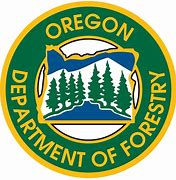Oregon Dept. of Forestry – 03/21/22 7:30 AM
Salem, Ore. — The Oregon Department of Forestry is inviting public comment on annual operations plans for state-owned forests in fiscal year 2023. These plans lay out the on-the-ground activities expected to take place in the coming fiscal year, such as timber harvests, reforestation, and trail improvements.
The public can weigh in starting Monday, March 21, through Thursday, May 5, on the draft annual operations plans for state forests in the Astoria, Forest Grove, North Cascade, Klamath-Lake, Tillamook, West Oregon, and Western Lane Districts, which includes the Tillamook, Clatsop, Santiam, Sun Pass and Gilchrist state forests and other scattered parcels. Draft plans are available at http://tiny.cc/oregonstateforests.
You can also view planned operations on an online map by using this link.
ODF is offering several convenient avenues for those who want to provide input on the draft plans:
- An online survey
- Online comments are also received through ODF’s comments page: http://tiny.cc/orstateforestcomment
- Comments can be emailed to odf.sfcomments@odf.oregon.gov
- Comments can also be mailed to ODF Public Affairs, 2600 State St., Salem, OR 97310.
By law, state forests must provide social, economic and environmental benefits to Oregonians. These lands are managed to create healthy, productive forests that provide high-quality habitat, clean water, revenues for rural communities, and recreation opportunities. Overall management policies and goals are established in long-range forest management plans and mid-range implementation plans. Annual operations plans describe activities to achieve the policies and goals laid out in those longer-range plans. Activities that affect fish and wildlife habitat are reviewed by the Oregon Department of Fish and Wildlife, while operations that may affect threatened and endangered fish and wildlife habitat are shared with the U.S. Fish and Wildlife Service.
Common activities included in an Annual Operations Plan include:
- Timber harvest operations
- Recreation improvement and maintenance projects
- Forest road construction, maintenance, and improvements
- Reforestation/replanting and young stand management activities
- Habitat improvement for native species
- Invasive species management
The most useful input speaks to these specific activities and whether they are consistent with longer-range plans, offers suggestions to improve efficiency or effectiveness, corrects errors, provides additional information, and is solution-oriented, understanding that state forests are working forests and by law must provide a variety of social, economic and environmental benefits.
About Oregon’s state forests: The Oregon Department of Forestry manages approximately 730,000 acres of Board of Forestry lands across 15 Oregon counties as well as 33,000 acres of Common School Fund land. This includes the Tillamook, Clatsop and Santiam state forests in western Oregon as well as the Sun Pass and Gilchrist state forests in Klamath County and scattered parcels throughout western Oregon.











